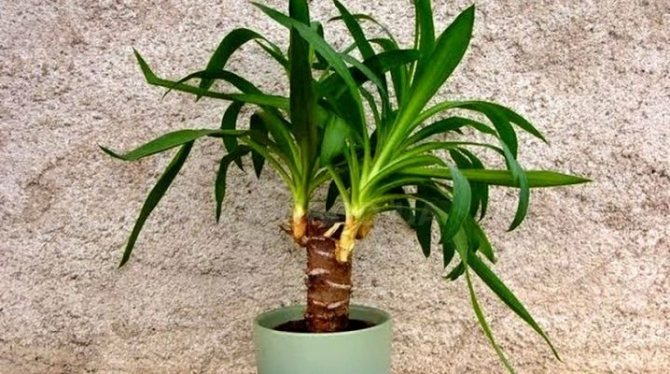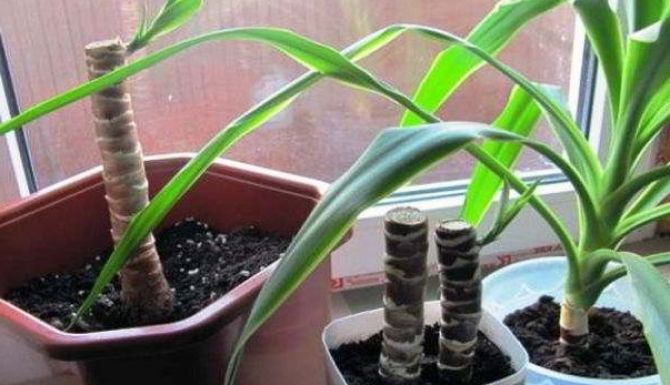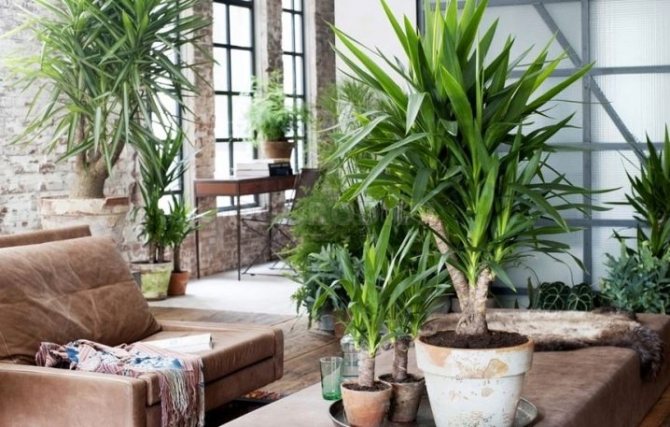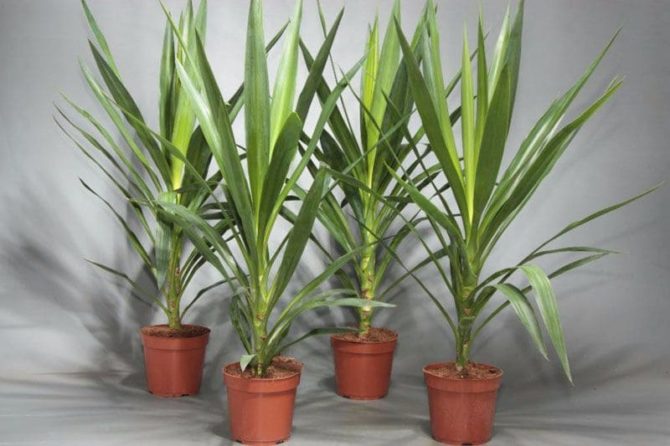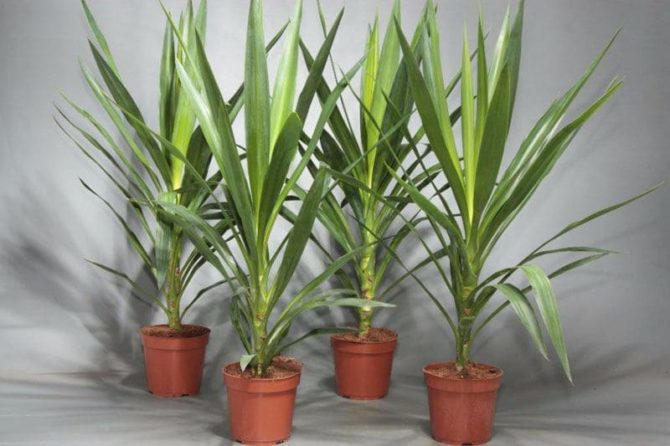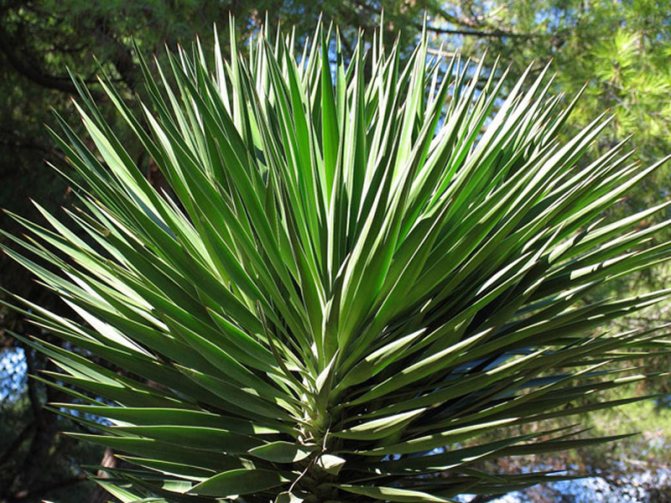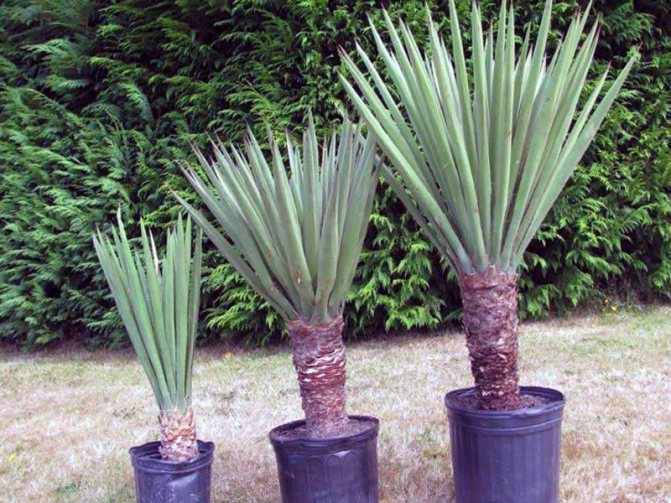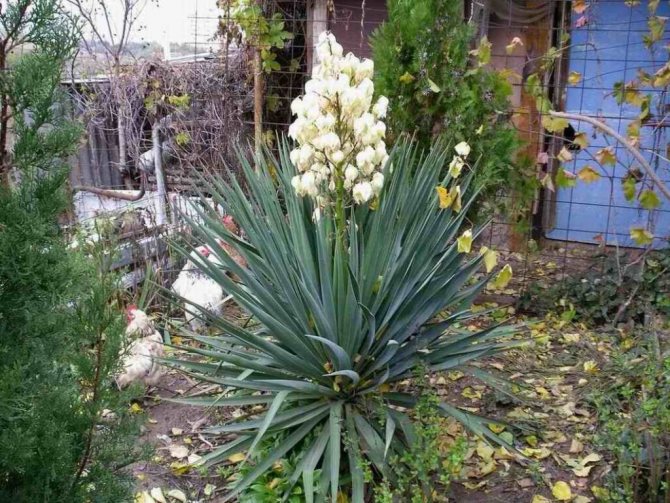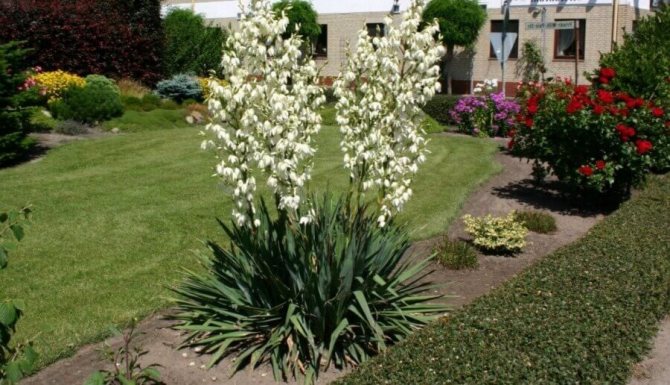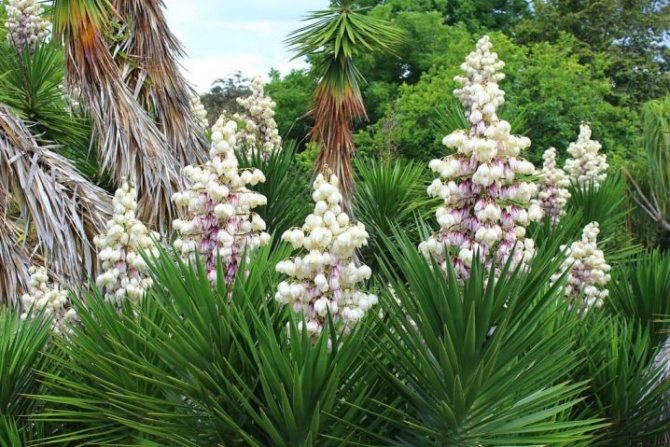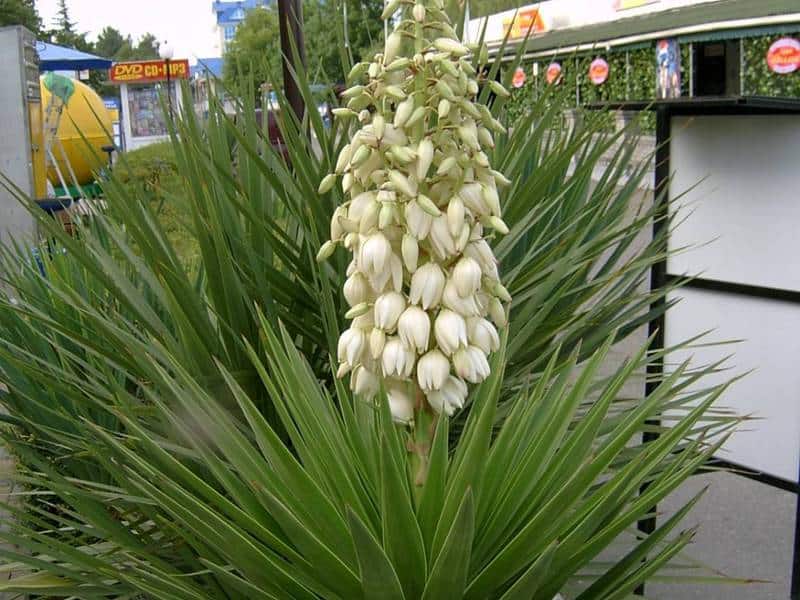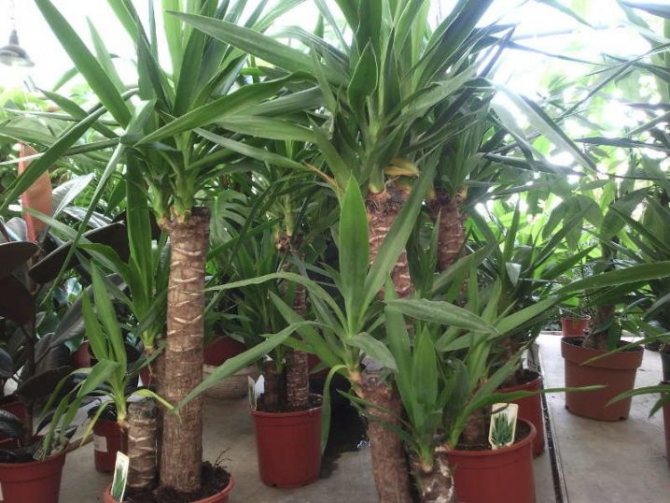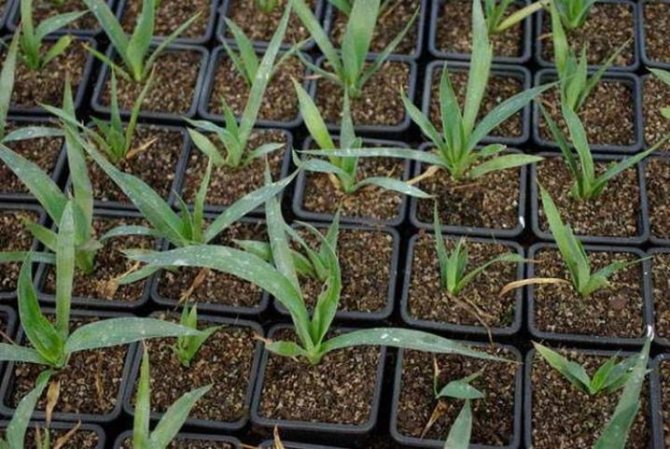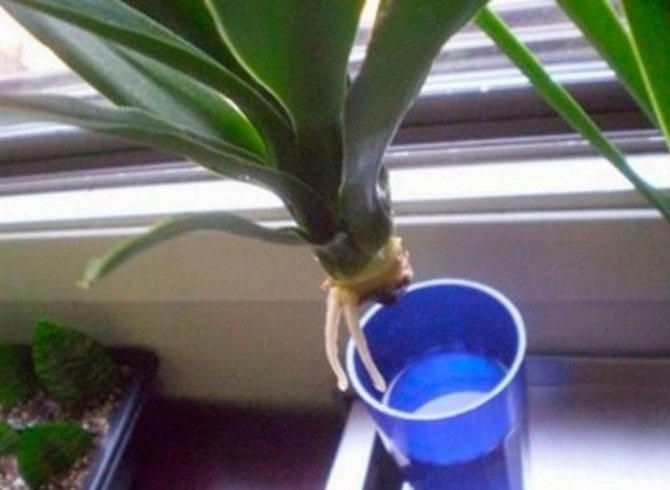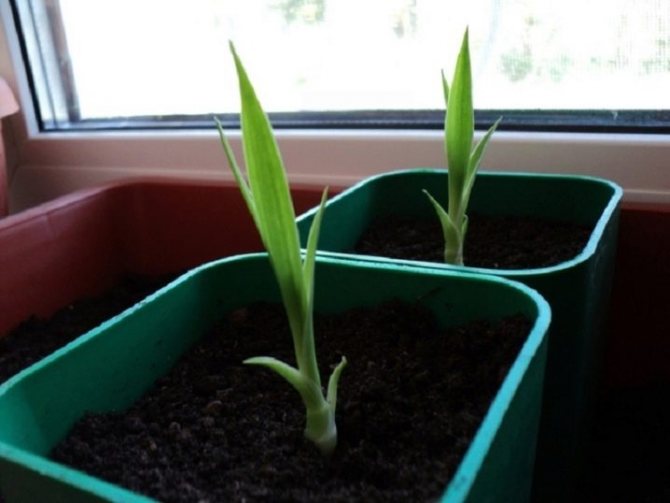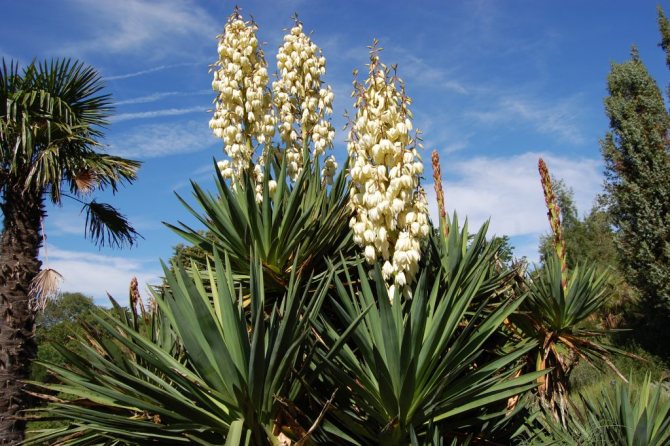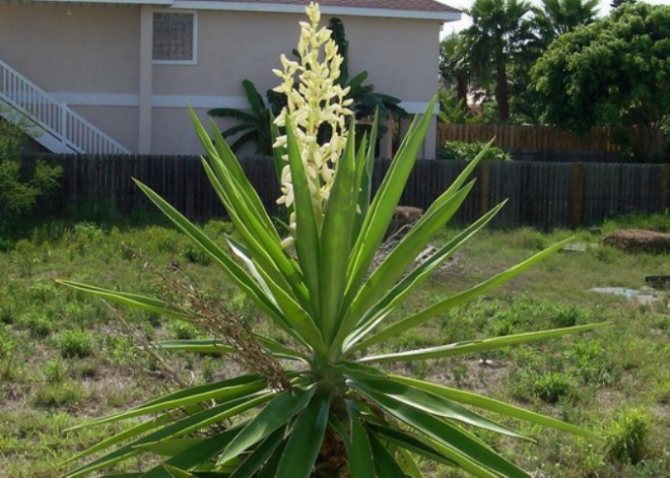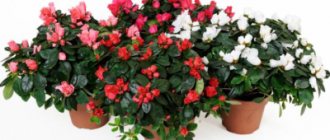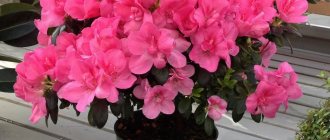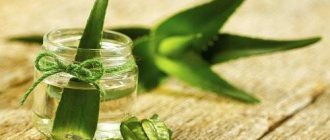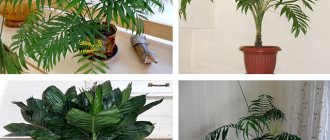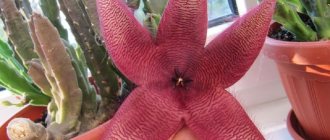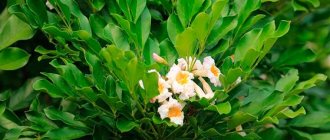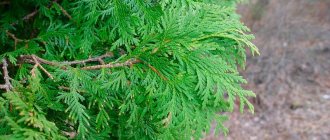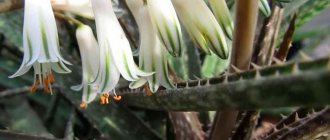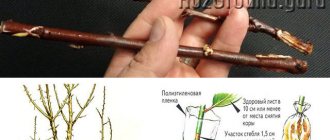Yucca is an arboreal and evergreen plant belonging to the Agavaceae family. At home, this false palm does not require significant maintenance, and reproduction is most often carried out by cuttings, as well as dividing the bush or shoots. In order to properly breed an indoor flower, it is necessary not only to take into account the botanical features of the plant, but also to adhere to the recommendations of experienced florists and specialists. Seed cultivation of indoor and garden ornamental crops is practically not used.
Botanical characteristic
The stem is most often ligneous, but some species have a characteristic rheum-branched stem. The foliage is crowded at the top. Leaves are linear-lanceolate, pointed. Characterized by the formation of rather large, bell-shaped, white, drooping flowers, located on slightly shortened pedicels.
Inflorescences are represented by a multi-flowered panicle. Six tepals are loose or have multiple joints at the base. The ovaries are characterized by numerous ovules. In place of the flower, fruit-boxes or relatively fleshy medium-sized berries are formed. In open field conditions, filamentous yucca (Yucca filamentosa) is grown, which relatively easily withstands temperatures down to minus 18-20 ° C. Street or garden, as well as ornamental palm grown in amateur floriculture, most often propagates in vegetative ways.
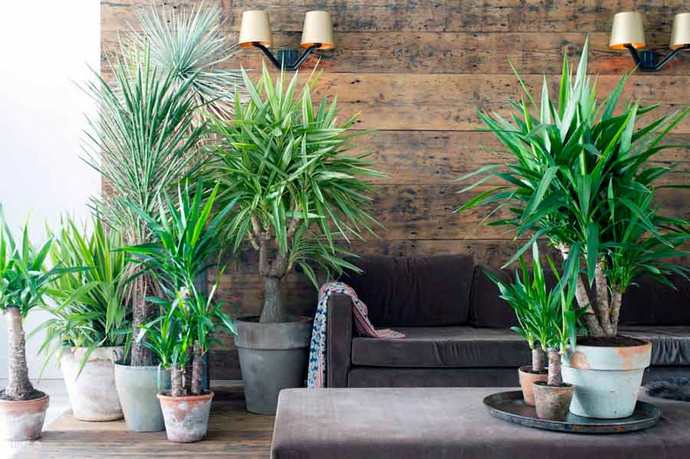
False palm cuttings
A decorative flower can be propagated by cuttings until the phase of active growth. Most often, such breeding is carried out in the last decade of winter or early spring. It was during this period that the remaining stem part rooted well separately. After pruning, the active growth processes of the lower part stop, therefore, this procedure is always carried out exclusively on grown, well-formed and tall palms.
In order to obtain an apical cutting, using a sharp and clean knife or secateurs, the top is cut off at a certain height. The cut is carefully and relatively abundantly sprinkled with crushed activated carbon, and then dried for half an hour at a standard temperature.
Pruning
This process is also very important for the yucca, as it allows you to form a beautiful luxurious crown. However, trimming can only be done when the trunk is at least eight centimeters in volume. In addition, it must be borne in mind that the remaining part will practically not grow anymore, which means that it is necessary to cut it off when the plant reaches the desired height.
The cut must be made so that as much of the stem part remains as possible. The place of the cut must be treated with a garden varnish prepared in advance or any disinfectant composition. After that, watering should be done once every three days. After a while, lateral processes will appear on the trunk.
To summarize, we can say that yucca is an exotic and highly ornamental plant.
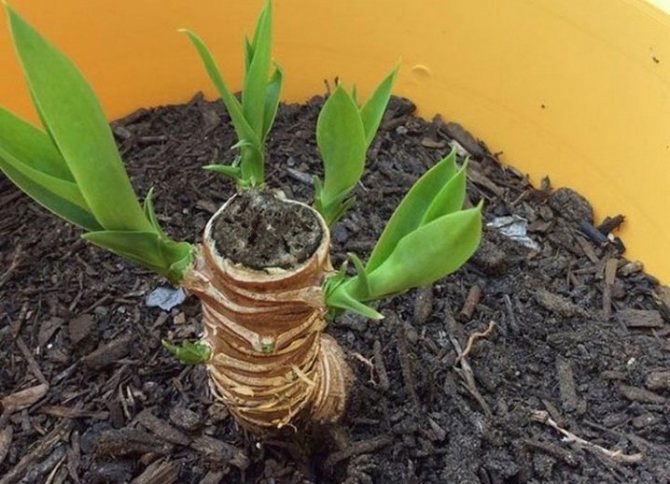

Evergreen trees can decorate any home and institution, if provided with the necessary conditions, care and regular watering.
For tips on caring for a yucca at home, see the next video.


Yucca is an amazing plant that lives not only in the southern latitudes, but also in the homes of residents of the northern regions. It grows and develops with pleasure in indoor conditions, initiating exotic lovers to reproduce it. This article describes in detail when you can plant a yucca and what methods to do this procedure.
Reproduction of yucca: cuttings (video)
Rooting is carried out in planting containers filled with the correct nutrient substrate or in a container with water, into which an activated carbon tablet is added. The rooted cutting and the soil must be regularly sprayed with water from a spray bottle. After the roots are formed, the young plant is planted in a permanent place in a flower pot.
The flowerpot should be placed in a well-lit area and provided with regular irrigation measures. When the first shoots are formed from the dormant buds under the cut off apical area, watering should become more intense. Only a few dormant growth buds are allowed on the thick trunk of the yucca. If the trunk is not well developed, it is advisable to leave only a couple of dormant growth buds. Thus, it is possible to get not only a new home flower from a rooted cuttings, but also a lush yucca from an old trunk.
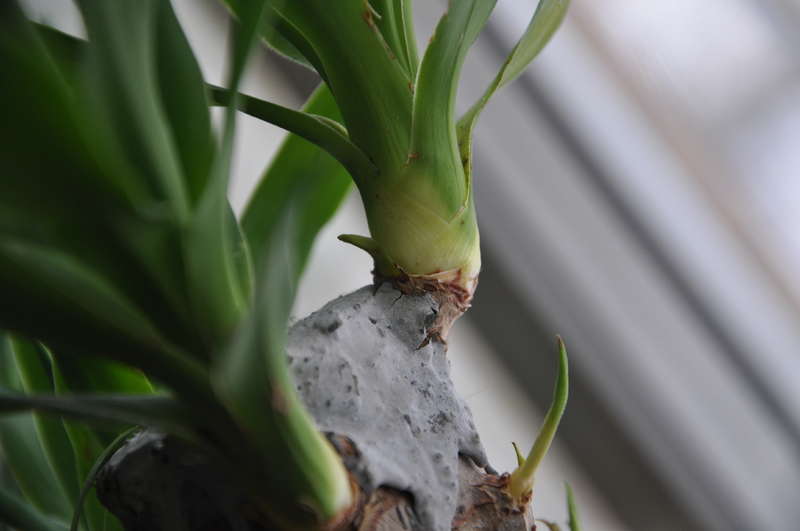

Transfer
In order for your pet to always feel comfortable, it must be transplanted periodically (every 2-3 years). The best time for this is spring, although this procedure can be carried out at other times of the year.
Before proceeding directly with the transplant, get rid of all dry leaves. Be careful with your plant, try not to damage the roots, as this can cause disease and even death.
The choice of a new pot is very important. There are several important nuances to consider:
- The diameter of the new pot should be 4-5 cm larger than the diameter of the rhizome.
- Choose a pot that has a 2: 1 depth to ID ratio.
- Opt for a pot made of durable material that will not deform when filled with substrate and planting.
The bottom of the pot is laid out with a layer of drainage material before transplanting. Next, the pot must be filled with new soil.
You can also reload the plant with the substrate and simply cover the remaining space with earth. But this can be done only if the old soil is not yet depleted and contains a sufficient amount of minerals.
When you fill up the ground, make sure that there are no voids with air. Water the yucca pot when finished.
Reproduction of room yucca at home: bush division
Bush division is the simplest and most affordable way of self-breeding, therefore it is very often performed precisely in the process of transplanting an adult exotic tree. Overgrown bushes are recommended to be dug out in April or early May., a neat separation of sprouts is performed, which must necessarily have roots and shoots.
The divisions obtained during the division must be planted in a permanent place and watered abundantly. Young planted cuttings are thermophilic, therefore, they need competent care, including neat and infrequent irrigation measures, shading from direct sunlight and feeding.
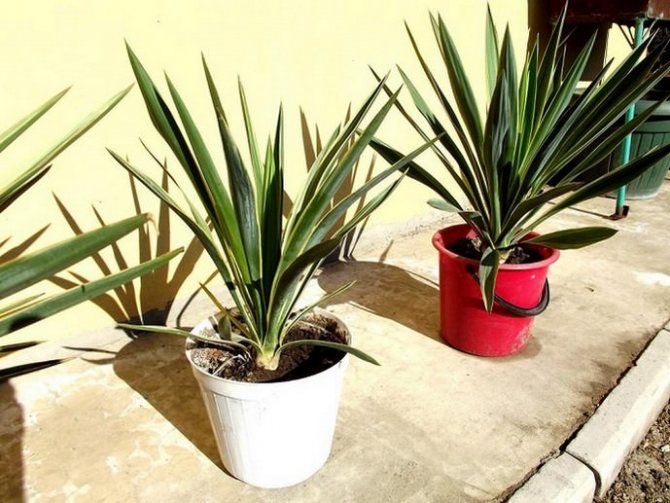

How to propagate yucca by layering
In the presence of signs of decay of the root system, as well as in the presence of healthy areas, the regrowth of a new root system is used. This breeding method is quite simple and must be produced according to the following technology:
- on a healthy trunk, slightly above the rotten area and below the top, a strip of bark is carefully removed;
- the strip of the bark to be removed should be 0.5 cm wide, and the cut is lined with moistened sphagnum moss and tied with plastic wrap;
- moss is regularly moistened with warm and sufficiently settled water from a household spray bottle.
After about three weeks, a root system is formed slightly above the cut on the bark. After the root length is optimal, the rooted area is separated and planted in a nutritious and fertile soil substrate. The cut must be sprinkled with crushed charcoal and dried a little at a standard temperature.
Use of offspring
In the most comfortable cultivation conditions and subject to proper care, an indoor flower is able to form babies suitable for reproduction already in the first year of life. Separating the root or stalk is very helpful. Such a timely and competently performed procedure can have a beneficial effect on both normal growth and full development. Many experienced amateur flower growers recommend leaving no more than five shoots. The standard process for rooting offspring is as follows:
- after the separation of the offspring, absolutely all cuts for a preventive purpose and to protect against rot damage, it is necessary to process it with chopped charcoal as carefully as possible;
- the separated offspring must be very carefully and correctly planted in pre-prepared planting containers filled with clean and moist, medium-grained sand;
- planted young offspring should be watered relatively abundantly with warm and settled water, and then carefully covered with a glass jar or high-quality translucent polyethylene;
- for high-quality rooting, it is imperative to ensure optimal humidity and temperature conditions at 22-24 ° C;
- daily ventilation of the room "greenhouse" and irrigation measures are carried out as the quality of drying of the soil mixture in the flower pot is carried out.
Subject to planting technology and creating the most favorable conditions for growing, the rooting process takes about a couple of months. After rooting, transplantation is carried out to a permanent place, in a flower pot filled with a nutritious substrate with the addition of pieces of charcoal.
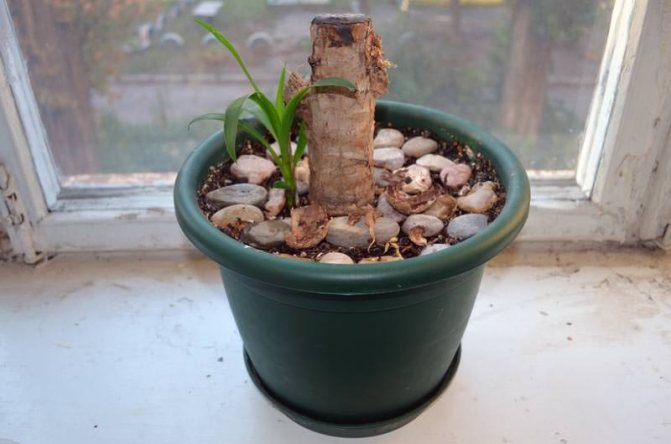

Tips for florists
When choosing a way to propagate or plant an indoor yucca, you need to adhere to a few simple recommendations. You should not disturb the flower unnecessarily from October to February, when the dormant period begins. It is best to breed in the spring, from April to May, or in early summer when there is good lighting. Side shoots can only be grown in spring.
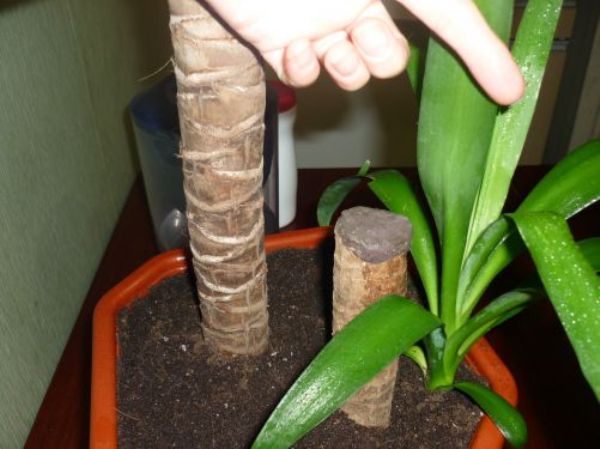

Here are some more tips for beginners from experienced florists.
- When buying trunk pieces for growing yucca, you need to watch that the workpiece with wax is elastic, not too dry and without rot spots. On the trunk there should be inscriptions where the top is and from.
- If the purchased stalk does not have inscriptions on the cuts (there is no marking of the top and bottom), it is grown in a horizontal position, having previously removed the wax and deepening it halfway into the ground.
- Pieces of trunks when growing buds must be covered with a film, glass container or a dense transparent bag so that moisture does not evaporate from the "greenhouse".
- The temperature in the room does not drop below 20-22 degrees Celsius for 1-2 months, while the buds and processes are forming.
- When trimming the top, the trunk is not discarded. The cut is sprinkled with crushed coal, watered moderately, fertilized. New leaves will grow at the pruning site, decorative branches will appear.
Features of garden breeding yucca
When grown outdoors, garden or street Yucca often sets seeds, which can be harvested in the last decade of August. The collected seed material is suitable for the subsequent cultivation of a highly decorative crop. Sowing works are carried out in a special, properly prepared and highly nutritious substrate, based on which an equal amount of leafy soil and sod land, as well as coarse-grained clean sand, is necessarily present.
Subject to all the rules of sowing technology, as well as when creating ideal, comfortable temperature conditions and optimal humidity, mass shoots appear in about a month and a half. After the formation of a pair of true leaves on the seedlings, you need to carefully dive into separate planting containers filled with a pre-prepared planting substrate. Seed-grown outdoor exotic yucca can be expected to bloom approximately three years after planting.
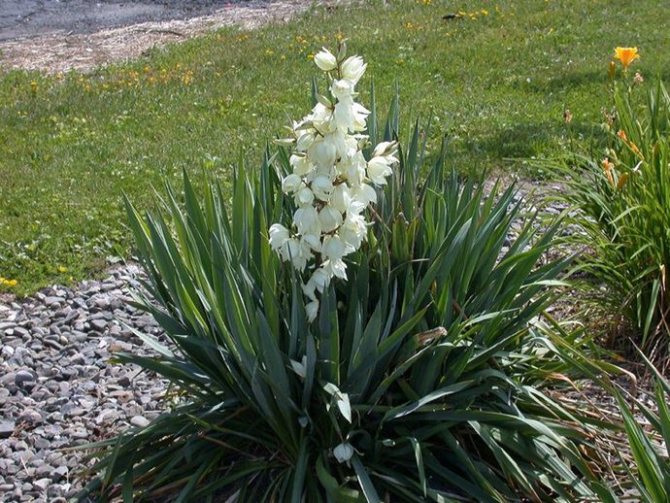

Substrate requirements
You can buy the nutrient soil at any gardening store or make your own. The main thing is that it is loose, it allows air and water to flow well to the roots. From the purchased mixtures for the plant, soil is suitable for palm trees, succulents, dracaena.
Yucca prefers to grow in soil with a neutral pH of 5-7. In this regard, at home, the soil must be prepared from coarse river sand, turf, leafy earth and humus, taken in approximately equal proportions. Black soil and peat can be added to young plants; it is not necessary to add humus for adult specimens.
The soil should be poured into a spacious high pot, having previously poured drainage - crushed stone, expanded clay, broken brick, clay fragments. Then a layer of soil with a height of 4-6 cm is poured, and only then a houseplant is installed. It is not worth deepening the flower more than 3 cm.
Tips & Tricks
The tropical highly decorative Yucca is quite capable of withstanding the Russian frosts, but when grown in open ground in most regions of our country, it is advisable to protect young and sufficiently heat-loving plants for the winter. In this case, frame structures with film cover and mulching of the flower garden with coniferous branches or dry foliage are used. To provide full winter protection, non-woven covering material or high-quality burlap can be used.
Growing yucca (video)
The use of a tropical tree on almost any personal plot is very wide. It is very popular with landscape designers, and has been especially widely used for landscaping in recent years, which makes it possible to give the territory a very exotic and attractive appearance. A very beautiful, colorful, but at the same time completely unpretentious in the care and cultivation of highly decorative tropical culture will make the landscaped landscape very unusual and individual, and will also delight its owners with an attractive appearance for many years.
What is the most effective way
In apartment conditions, yucca is propagated by seeds extremely rarely. This method is quite laborious and time consuming. In order for a flower of sufficient size to grow from a seed, at least 2 years must pass.
Vegetative propagation in an apartment is preferable. It allows you to get a decorative yucca in a few months.
When rooting the top or dividing the rhizome, a large young plant grows very quickly... And when multiplying by fragments of the stem, several small young specimens can be obtained from one segment.
Did you like the article? Share it with your friends on social networks:
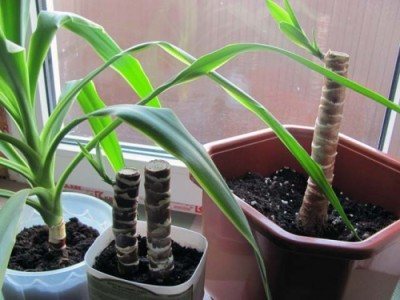

Evergreen exotic plant, resembling a palm tree in appearance, has taken root perfectly in apartments, office premises, greenhouses.
With its spectacular appearance, unpretentiousness in the content, yucca has won a large number of fans among fans of indoor floriculture.
Yucca flower: reproduction, photo, planting, cultivation, transplantation and care.


